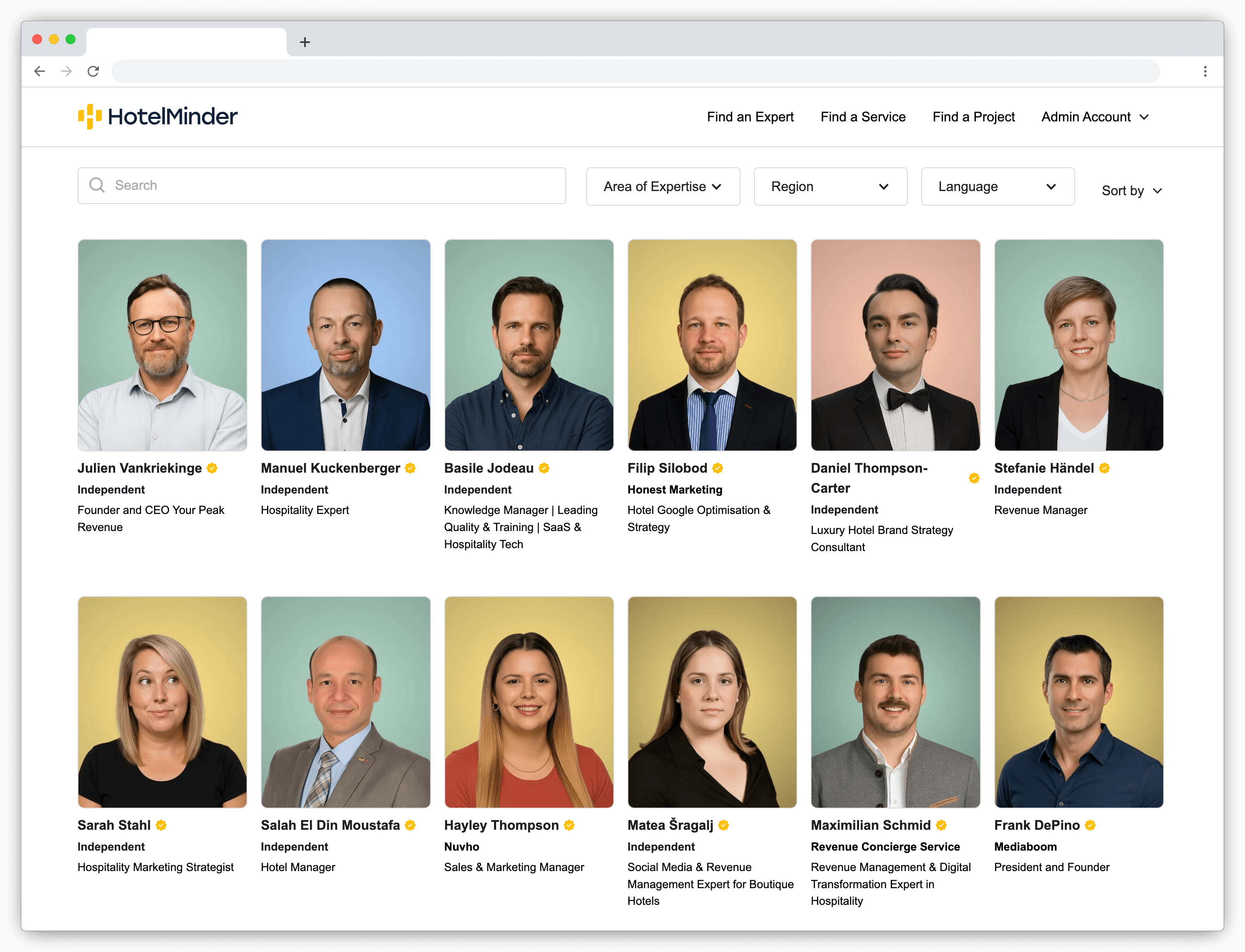Busting 3 Hotel Tech Myths That Are Costing You Revenue
A hotel consultant debunks 3 common hotel technology myths. Learn why new tech isn't always the answer & how to truly optimize hotel operations for profit.
 Written by
Mia Kun
in
Revenue Management
Written by
Mia Kun
in
Revenue Management We already know that revenue management means selling the inventory – rooms and beds. However, to maximize revenue, the inventory should be sold at the right price, at the right time, and to the right customer through the right channel with the least cost involved.
The main difference is in the type of inventory you sell. While in most types of hotels, you have different types of bedrooms (twin, queen, king, with a view, deluxe, executive, suite, etc.). Whereas in hostels you sell beds or private rooms. Additionally, there is a challenge with selling only male or female beds in hostels.
While in hotels, our key metric for revenue management strategy is RevPAR (revenue per available room), in hostels, this becomes RevPAB (revenue per available bed).
When it comes to hotels, the first step is to identify the correct customer segments. Doing the same in a hostel is much more challenging as the guests don’t fit into traditional brackets such as leisure, corporate, groups, etc. For a complete guide on how to segment your hostels customers, see: Identify, Segment and Target your Hotel Customers.
In fact, the majority of the travelers will be leisure travelers. Therefore, it is essential to seek different metrics to identify the right customers.
One way to do that is to look at price elasticity (willingness to pay) and booking lead time (how far ahead people book).
With HotelMinder, match with vetted hotel experts to solve your operational problems.

The next step is to look at the different products offered. As mentioned above, we are working with RevPAB (revenue per available bed). Hence, we need to categorize the inventory correctly.
Type of inventories:
Product price increments will be driven by the demand generated for them. People will be willing to pay more for popular preferences and private rooms when compared to mixed dorms.
In the past, hostels were considered an affordable option for travelers with a limited budget. But things have changed! Nowadays, 23% of travelers are less concerned about finding a good deal on flights or accommodations and are more interested in staying somewhere that offers local activities (27%). This means that working with local venues (museums, tourist attractions, etc.) to package deals and offers for visiting guests will help increase revenue.
Pricing will depend on the demand. Therefore, holidays, events, and weekends will have a higher price, while midweek will be cheaper. Using dynamic pricing will allow for increasing the rate based on the demand. Lower products, such as mixed dorms, will be the first ones to sell out, and the price increment of female/male dorms and private rooms will get justified by demand as well as by convenience.
Assessing the demand correctly will help yield the same product achieving higher revenue while still staying within the travelers' budget. Travelers who pick hostels as their accommodation often have a set budget (a maximum they are willing to pay) in mind when searching for a place to stay. This is what we have identified as price elasticity.
Hence the opportunity to yield is with the lead time, where the further out they book, the better the price, and the closer they book to the arrival date, the higher the rate. Or the other way around, depending on the assessed demand for the accommodation.
To set up the correct dynamic pricing, you need to look at past data (trends, occupancies, and events) and create an accurate forecast of what you want to achieve.
We have already looked at RevPAB. However, there are some other measures we need to look at to correctly analyze the performance of a hostel. These considerations slightly differ from the ones used for hotels.
Hostels have a higher turnover than hotels because they sell beds and not rooms. Hence, even if one bed is empty, it needs to be cleaned and ready for the next guest to book and stay. Hostels also save money by not providing as many amenities as hotels (towels, soap, etc.), and some hostels even choose a cost-effective way of changing sheets.
Thus, there are many ways to cut costs in a hostel while ensuring it can turn over as quickly as possible to not miss out on revenue. The key is to identify the best booking and hospitality management that works for your hostel. This way, you can deal with turnovers in the most cost-effective way, while keeping all the beds occupied.
In conclusion, dealing with hostels is slightly different from hotels. However, the aim is the same. Fill up all the beds and yield as much as possible based on demand. To do that, the key is to have enough past information to find the correct trends and patterns on which the strategy can be built and have a clear goal or forecast in mind of what you wish to achieve with your revenue management strategy!
Mia Kun, originally from Hungary, Budapest, has been living in London UK while pursuing her interests in travelling and experiencing other cultures.
HotelMinder brings value to hoteliers through a Knowledge Hub, a Technology Marketplace and one-to-one hotel management consulting services. With our 50+ years of combined expertise, we provide actionable solutions to critical business challenges, while establishing a relationship based on trust, engagement and mutual benefit. We help hotels meet and exceed their business goals through an in-depth analysis of consumer insights, business requirements and opportunities.
We are excited to announce the launch of Lobby, a brand-new network of hospitality consultants, which connects hospitality industry decision-makers with carefully vetted hospitality experts to deliver faster, more effective, actionable solutions to hoteliers’ top problems – launching to the public in October 2025.
If you are a hotelier who needs support, information or advice, or a hospitality industry expert who wants to help hoteliers achieve their business goals, you can enter the Lobby for free.
Your trust is our top priority. Whether you're choosing technology or connecting with an expert, we're committed to transparency. Here’s how we ensure you get unbiased, reliable guidance. Learn more about our promise.
Browse Knowledge Hub
Check out the latest insights, news and articles from the HotelMinder team, industry leading technology vendors and hospitality consultants.
A hotel consultant debunks 3 common hotel technology myths. Learn why new tech isn't always the answer & how to truly optimize hotel operations for profit.
Access world-class hospitality expertise with Lobby. Our on-demand hotelier expert network offers proven solutions for revenue management, marketing, and technology challenges. Join free.
Learn Generative Engine Optimization (GEO) to boost your hotel's visibility on AI platforms like ChatGPT. Our guide covers websites, reviews, and OTAs. Get seen.
Discover what a Hotel CRS (Central Reservation System) is, how it integrates with your PMS, channel manager, and booking engine and the key benefits it brings to hotel operations, revenue and guest experience.
Discover more insightful articles in our Knowledge Hub and Partners Hub.
Sign up for expert insights, exclusive offers, and real solutions made for hoteliers like you.